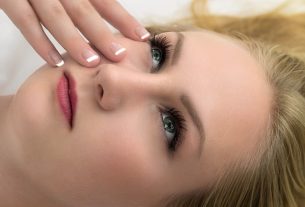Ever feel lost in the “clean” skincare aisle? It’s like a whole new language, isn’t it? There’s so many labels and claims. It’s easy to get confused. The truth is, “clean beauty” isn’t as clear-cut as you might think. There aren’t real rules. That’s why we’re diving in. We’ll break down the hype. We’ll help you find what really works.
Decoding the “Clean” Beauty Hype
What does “clean beauty” even mean? It’s a good question! It seems like every brand has a new answer. There’s no real, official rulebook for “clean.” Most brands mean their products skip certain ingredients. These are things like parabens, sulfates, or artificial dyes.
What Does “Clean” Actually Mean?
Think about it. What ingredients do these brands avoid? You’ll often see them list parabens. Also, sulfates and phthalates are no-nos. These chemicals have gotten a bad rap. Some studies question if these ingredients are good for you. “Clean” products leave them out, supposedly.
The Problem with Fear-Based Marketing
Many brands use fear to sell “clean” products. Are they always telling the whole truth? Not always, no. It’s easy to scare people into buying things. But that isn’t always helpful, right? Some “bad” ingredients are actually fine in small amounts.
Understanding Ingredient Lists: What to Look For (and What to Ignore)
Okay, let’s talk about reading labels. The ingredient list is your friend! Don’t just look for “paraben-free” on the front. Really dig into the back of the product. What should you look for, though?
Demystifying Common “Bad” Ingredients
Let’s clear up some confusion. Parabens are preservatives. They prevent gross stuff from growing in your products. Sulfates make things foamy. Some fear they are too harsh, though. The truth? The dose makes the poison. Many things are okay in small amounts.
Focus on Skin Type and Concerns
The “cleanest” product isn’t worth it if it’s not right for your skin. Do you have dry skin? Oily skin? Are you dealing with acne? Those things matter more than a “clean” label. Look for ingredients that target your problems, not just buzzwords.
The Grey Areas of “Natural” vs. “Synthetic”
Here’s something tricky: natural isn’t always better. Synthetic isn’t always bad. Nature gives us great things, for sure! But labs create things, too. Some lab-made ingredients are super safe and useful.
When “Natural” Isn’t Better
Essential oils smell nice. But some cause irritation. Poison ivy is natural, too! Do you want it on your face? No way! Natural doesn’t automatically equal safe or effective. Be careful with strong plant stuff.
The Benefits of “Safe Synthetics”
Labs make ingredients stable and effective. Think about Vitamin C serum. The lab can help it stay potent. This means it keeps working longer on your skin. Science makes skincare work better, sometimes!
Building Your “Clean-ish” Skin Care Routine: Product Recommendations
Alright, let’s build a routine. Forget “clean” for a sec. Focus on what your skin needs and finding products that deliver. Here are some ideas:
Cleansers: Gentle and Effective
- Dry Skin: Look for creamy cleansers with hydrating ingredients.
- Oily Skin: Try gel cleansers with salicylic acid.
Serums: Targeted Treatments
- Anti-Aging: A retinol serum at night.
- Hydration: Hyaluronic acid serum.
Sunscreen: Non-Negotiable Protection
- Daily Use: Find a broad-spectrum SPF 30 or higher.
- Sensitive Skin: Mineral sunscreens with zinc oxide or titanium dioxide.
Beyond Products: Holistic Skin Health
Skincare isn’t just about creams and potions. Your lifestyle counts, too! Diet, sleep, and stress all play a role in how your skin looks and feels.
The Gut-Skin Connection
Your gut and skin talk to each other. A healthy gut can mean clearer skin. Eat your veggies and good bacteria!
Stress Management and Skin
Stress messes with your hormones. This can trigger breakouts and other problems. Find ways to chill out! Yoga, meditation, or just taking a walk can help.
Conclusion
“Clean” skincare can be confusing. It’s just a marketing term. Instead, learn about ingredients. Understand your skin. Pick products that work for you. Remember, always test new products on a small patch of skin first! Making informed choices is the best way to find your ideal skincare routine.



